Regardless of your occupation, physical fitness, or body type you could fall victim to heel pain. How can you prevent or reduce heel pain? The answer is simple, by wearing comfortable and supportive shoes. Those who are active on their feet or stand for long periods are at a higher risk for heel pain, especially when wearing unsupportive footwear. Not to mention, physical activity from standing, walking, and running on hard surfaces often contributes to heel pain. Not only does heel pain affect your foot health, but it also contributes to other issues like knee, hip, and back pain.
What is heel pain?
Heel pain is a common foot problem that is often caused by a couple of foot issues and conditions: plantar fasciitis, heel spurs, or Achilles tendonitis. Most commonly, heel pain is usually experienced at the bottom of the heel (plantar fasciitis) or just behind it (Achilles tendinitis), where the Achilles tendon connects to the heel bone. For one thing, heel pain may become so severe for some that just standing up first thing in the morning is unbearable.
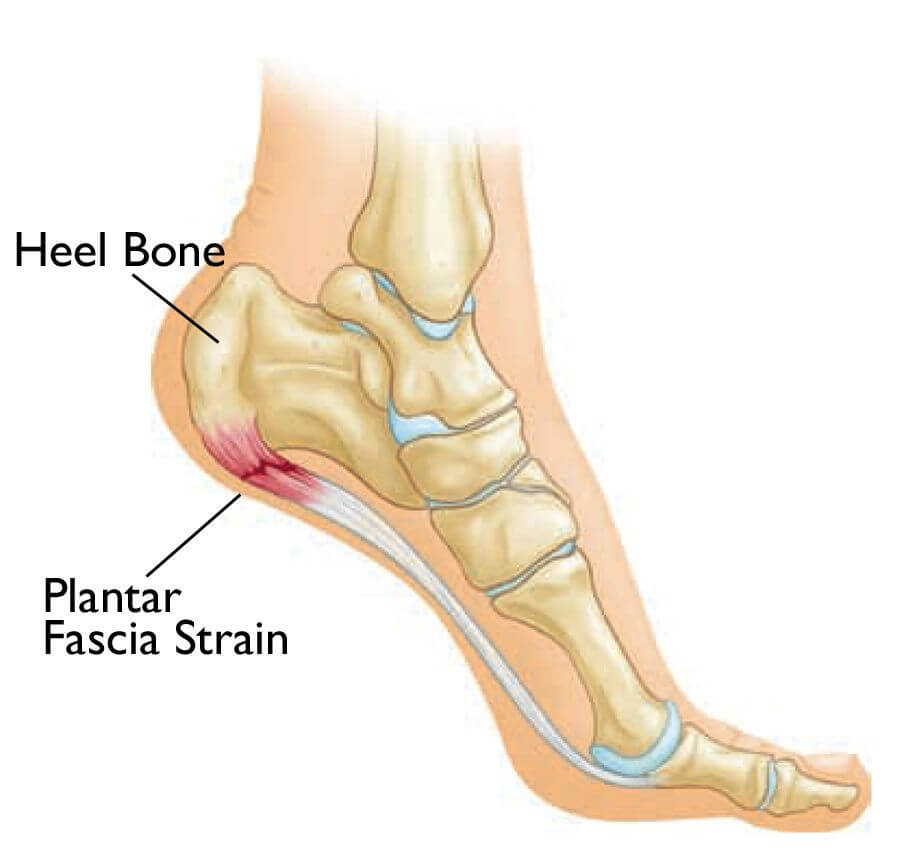
What Causes Heel Pain?
There are several factors that can lead to heel pain after wearing the incorrect shoes for certain activities. Some of the most common causes are:
Achilles tendinitis is a pain in your heel after your Achilles tendon, which connects the heel bone to your calf muscles, is overused or stretched too far. Common in runners and hikers who recently increased the intensity of their workout.
Heel bursitis is another ailment that afflicts people doing workouts that involve hard landings or wearing shoes that distribute your weight unevenly and towards the heel after standing and walking for long hours. It happens when the bursa, a cushion in the back of the bone that is full of fluid, becomes inflamed. A note: heel bursitis is not the same as heel spurs.
Heel spurs are growths that develop on the heel. They’re not bone but the accumulation of calcium. Nonetheless, then can cause sharp heel pain, especially in runners after suffering from ligament and muscle strains without recovery. Plantar fasciitis is closely linked to the development of heel spurs and heel spur pain.
Plantar fasciitis is the main cause of heel pain in most cases of it. It results from your plantar fascia, the thick band of tissue and ligament linking your heel to your toes, being inflamed. This leads to plantar fasciitis symptoms such as sharp pain in many areas of the foot, including the heel and the middle of the foot.
Can Heel Pain Be Caused By The Wrong Footwear?
Wearing the wrong footwear is almost always the cause of plantar fasciitis and other foot problems that are the most prevalent in people who work on their feet throughout the day or do high-impact exercises like running or hiking. Any podiatrist or foot and ankle physician will right away ask about your footwear if you come in with heel pain.
Although the first to notice they're wearing the wrong shoe are people with conditions such as flat feet or naturally high arches, sooner or later, anyone caught wearing the wrong footwear will suffer the consequences. A lack of cushioning and support from your shoes when you stand, walk, or run, means your arches and heel will receive the full force of any impact, injuring the structure of your feet. This will lead to plantar fasciitis or other problems. The incorrect footwear can also change your gait, increasing the risk of walking strangely or making you roll your feet inward and outward, causing a variety of other issues.
Another big problem is constantly wearing shoes meant for a specific function or sport and not using them correctly. Only use footwear for its purpose, and avoid footwear that’s either too loose or too tight, that pushes toes together, that lacks adequate support (flat and inflexible insoles and midsoles), are not durable, worn out, is poorly insulated, and not breathable. And just avoid old shoes that have seen better days.
How Do Shoes Help Your Heel Pain?
In some cases, physical therapy in explored as an option to treat heel pain. But in most cases, you can solve heel pain and get eventual pain felief simply by correcting the cushioning that your heel gets from the insole of your shoe. It’s even possible to give your foot too much cushioning, making your gait too unstable, for example. Rather than only looking for extra cushioning, you need to look for a shoe that provides stability and comfort to your sole and heel, and many of the brands on this list check these boxes.
In some cases, custom-made orthotics might be a good option. A lot of the shoes on the list come with removable insoles, which means you can use your orthotics to support and correct problems like ankle overpronation or high arches; and alleviate pain in the process. Some are made to complement your already comfortable shoes and give the heel or ball of your foot extra support, like ankle-foot orthotics that extend from the heel to the lower calf.
Other Ways to Prevent Heel Pain
- Do warm-ups before any exercise and practice daily stretching techniques to improve calf and leg flexibility.
- Keep a healthy weight. Being overweight puts extra strain on your feet and heels.
- Avoid high heels and always go for comfy shoes and good support.
- Avoid high-impact workouts like running and basketball. Swimming and biking are preferable.
- Wear insoles or inserts inside your shoes that will fix abnormal foot movements, helping you diminish the stress on your heel.
Best Shoes for Heel Pain
Comfortable shoes with arch support, a deep heel cup, a firm heel counter, or heel support are a great choice for reducing foot pain associated with heel pain. The best shoes for heel pain will align your feet to their natural position and evenly distribute your weight across your foot. Thus, reducing the pulling of your plantar fascia, which is a primary cause of heel pain. Now that you understand the importance of wearing supportive shoes, below is a list of the best shoes for heel pain.
1. Sovella PF Sandals
2. Sovella Cork Shoes
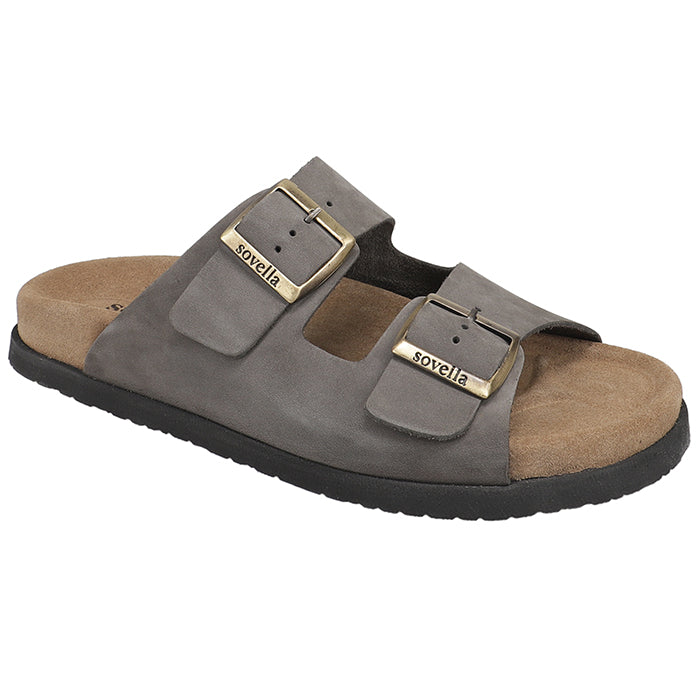
3. New Balance 990v6
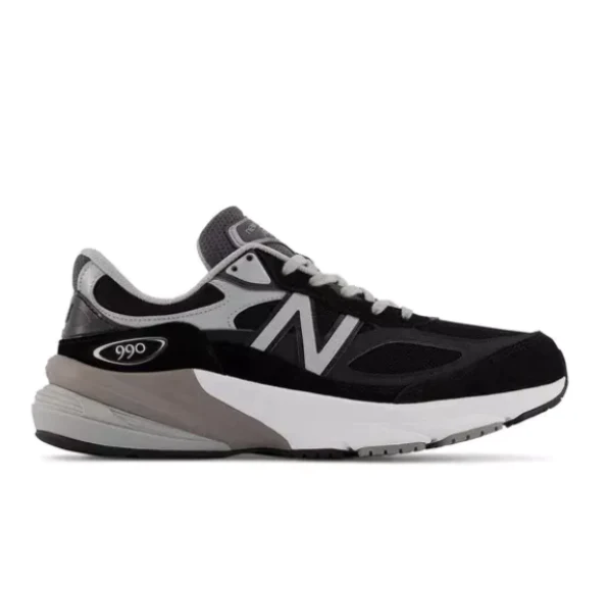
4. HOKA Bondi 8
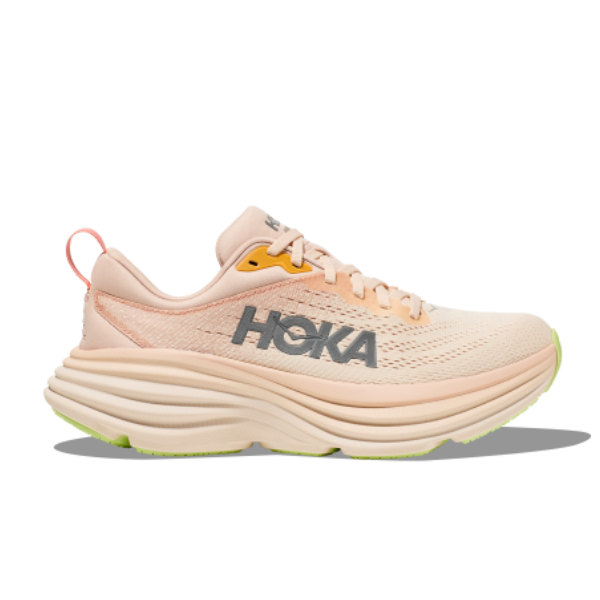
5. Aetrex Jillian
6. Brooks Adrenaline GTS 23
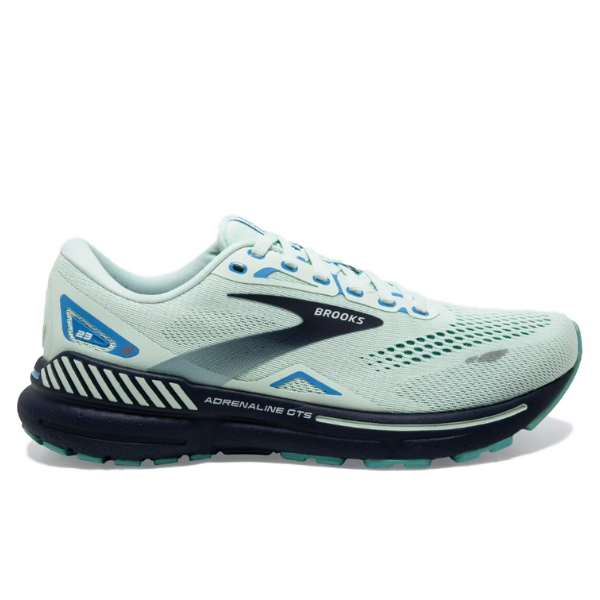
7. Dansko Henriette

8. ECCO Soft 7
9. OluKai Ohana
Where to Shop Comfortable Shoes for Heel Pain?
Whether you prefer to shop online or in-store, at Lucky Feet Shoes we have a large selection of the best shoes for heel pain for both men and women. But, if you prefer personalized shoe fittings, great customer service, we have nine orthopedic shoes and comfort shoe stores located in Southern California. Which are located in Anaheim Hills, Rancho Cucamonga, Riverside, Redlands San Dimas, Long Beach, Temecula, Upland and Palm Desert. Therefore, we invite you to stop by our shoe store for a free foot analysis and try on our best shoes for heel pain. In addition, we have a large selection of orthopedic shoes, comfort shoes, wide shoes, arch support, shoe inserts, and custom orthotics! We carry a wide selection of comfortable footwear ranging from the best walking shoes, sandals, heels, running shoes, casual sneakers, clogs, wedges, flats, booties, and boots. Therefore, we encourage you to shop in-store for our personalized customer service and free foot analysis! Schedule a free foot analysis today!
Finding the Best Shoes For Heel Pain
When it comes to heel pain, investing in a good pair of shoes that provides adequate arch support, cushioning, stability, and other benefits, can significantly impact your lifestyle. Consider the next features before buying the best shoes for heel pain:
Cushioning
Both feet are frequently off the ground at the same moment while you run. The impact is absorbed and dispersed with the perfect cushioning. Shoes with inadequate cushioning are commonly worn by those who suffer from heel pain, or they run heel-to-toe and wear shoes worn down at the heel. Wearing shoes with shock-absorbing technology delivers soft and springy cushioning and is a great way to provide extra support for your feet. This type of cushion is designed to protect the heel and the midsole, allowing the wearer to absorb shock more effectively.
Wide Toe Box
There are several shoes with a narrow toe box, such as high heels and dress shoes. This inhibits the movement of the toes and can cause pain in the tendon that runs from the heel down to the toes—shoes should have ample room for your feet's natural movement.
Get footwear with a wide toe box and plenty of wiggle room that provide a comfy and pain-free experience, no matter your activity.
Arch Support
Some pain reduction can be gained by wearing shoes with adequate arch support. Especially if you have flat feet and are experiencing heel pain. Arch support in the midsole of your everyday running or walking shoes is essential.
As a result, the surrounding ligaments and tendons are less likely to be damaged, and your ankles will also become more stable, reducing your chance of heel pain. Technology such as a triple-density dynamic support system in the midsole provides structure and stability for your feet. Also, soft but stable foam is ideal in a supportive shoe for cushioning the impact of each step.
Stability Features
Some individuals may find that stability characteristics like medial posts, dual-density midsoles, or shanks are useful, but this is not the case for everyone. In the event that the stability provided by your shoes is not sufficient for your feet, placing a device known as an orthotic into the shoe may be of assistance. You can acquire orthotics from a drugstore or work with your physician to have orthotics that are built precisely for the shape of your foot.
Elevated Heel
The Achilles tendon and the area where it joins to the heel bone can be relieved of stress by wearing shoes with somewhat thicker heel padding. If you're experiencing heel discomfort on the back of your foot along the Achilles, you may benefit by reducing the pressure on this area. An Achilles notch, which is simply an indent in the back of the shoe, is also something to check for if you're shopping for the right shoes.
FAQ
What causes pain in the back of the heel?
Plantar fasciitis is the most common cause of heel pain, which is the inflammation of the tissue running from your heel to your toe bones on the bottom of your foot. This condition affects up to 10% of the population, although other common causes exist, like arch height, constant impacts and stress on the heel, Achilles tendonitis, arthritis, or bursitis.
How to relieve heel spur pain?
The first thing you need to do is rest. Forgo any exercise or physical activity that could be worsening your problem. Another option besides changing to more comfortable footwear is to treat heel spur pain with non-steroidal anti-inflammatory drugs (NSAIDs) to reduce inflammation. Or, if the pain is worse, then steroid injection is an option, along with icing the area. In the most extreme cases, surgery might be needed.
How can you avoid heel pain caused by wearing heels?
Don’t wear heels. Or at least don’t wear them regularly and all day. And when you do, try using insoles or orthotics that will add an extra layer of comfort and support for your heels.
What’s the best way to prevent heel pain?
Lifestyle changes coupled with better and sturdier shoes for good support. Avoid high heels if you’re starting to feel heel pain, and make sure to stretch daily to strengthen your calves. Don’t forget to also warm up before any exercise. Avoid high-impact activities like running, and switch to swimming or biking. Even untucking your bedsheets will improve your heel pain, giving your feet more room to stretch during the night.
Who is the most at risk of experiencing heel pain?
Anyone who isn’t wearing the right footwear will experience heel pain sooner or later, especially those who frequently wear old and worn-out shoes, high-heels, shoes that are too tight, or those with very poor durability and cushion. But there are more at-risk people than others. Women are especially prone to heel pain because they use high heels. People who are overweight and those who stand for long hours each day will also put a lot more pressure on their heels. Runners are especially vulnerable to heel pain, as well as athletes who practice high-impact sports. People with heel spurs, flat feet, or very high arches will also suffer the effects of bad footwear quickly. As mentioned above, someone with low flexibility in their calf muscles will also be at risk for heel pain and will need to do regular stretching exercises to improve.

Jerick Sobie
Since 2005, I have been a dedicated small business owner specializing in footwear retail. With over 20 years of experience, my business partner and I have helped customers find the perfect shoes that combine style, comfort, and quality. Our expertise extends beyond local sourcing—we have traveled internationally to discover high-quality footwear that meets our customers’ needs. In addition to running my business, I have participated in numerous health fairs and educational seminars, sharing my knowledge on proper footwear and foot health. Committed to providing exceptional service, We carefully curate our selections to ensure the best fit and support for every customer.




























